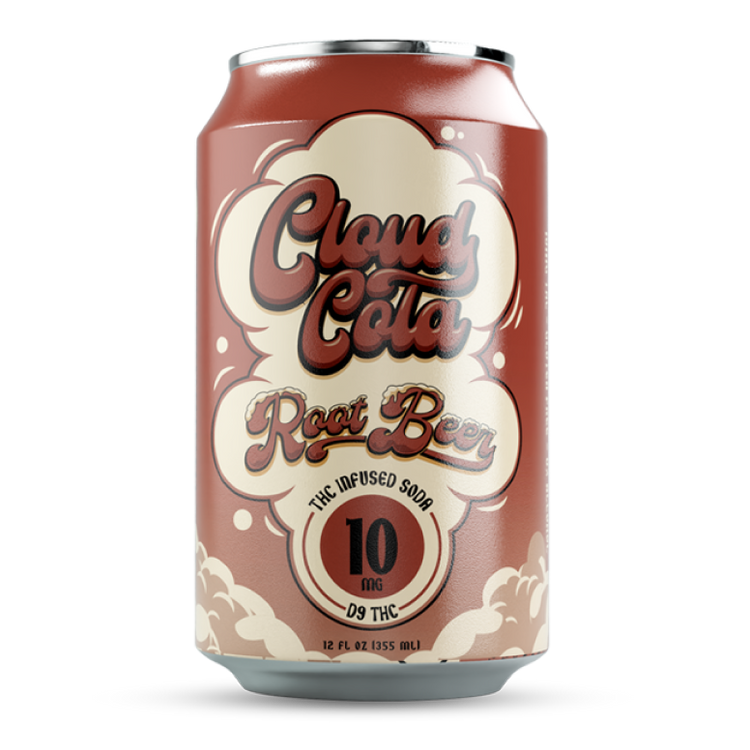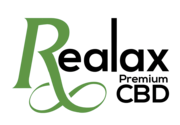The Rise of “High Soda”
A new trend is sweeping the nation: “high soda.” These caffeinated beverages contain legal, psychoactive substances that offer users an intoxicating buzz. From brightly colored cans to enticing flavors, high sodas are marketed as a novel way to experience altered states of consciousness without the stigma associated with traditional drugs.
Legal Loopholes and Market Demand
The rise of “high soda” is fueled by a combination of market demand and legal loopholes. Consumers are seeking alternative ways to alter their mental state, drawn to the novelty and perceived safety of legal substances. Manufacturers have capitalized on this trend, exploiting ambiguities in drug legislation to incorporate psychoactive compounds like kratom, kava, and synthetic cannabinoids into their drinks.
Popular Brands and Their Ingredients
Popular brands offering these “high sodas” often use catchy names and alluring packaging to appeal to a wide range of consumers. The ingredients lists can be complex, but commonly include substances like kratom extract, known for its stimulating and euphoric effects. Kava, another ingredient often found in these beverages, is a natural relaxant that can induce feelings of calm and well-being. Synthetic cannabinoids, designed to mimic the effects of marijuana, are also increasingly prevalent, offering potent psychoactive experiences.
However, the lack of regulation surrounding “high sodas” raises serious concerns about potential health risks. The potency and purity of these substances can vary widely, making it difficult to predict the effects on individual users. Furthermore, mixing these compounds with alcohol or other drugs can be particularly dangerous, leading to unpredictable and potentially harmful consequences.
Decoding the Effects

A new trend is sweeping the nation: “high soda.” These caffeinated beverages contain legal, psychoactive substances that offer users an intoxicating buzz. From brightly colored cans to enticing flavors, high sodas are marketed as a novel way to experience altered states of consciousness without the stigma associated with traditional drugs.
How Do These Sodas Work?
The alluring effects of “high soda” stem from the inclusion of psychoactive substances like kratom, kava, and synthetic cannabinoids. Kratom extract is known for its stimulant and euphoric properties, inducing feelings of energy and pleasure. Kava, on the other hand, acts as a relaxant, promoting calmness and well-being. Synthetic cannabinoids are engineered to mimic marijuana’s psychoactive effects, offering potent sensations.
These substances interact with the brain’s neurotransmitter systems, altering mood, perception, and cognitive function. Kratom stimulates dopamine release, contributing to feelings of euphoria and relaxation. Kava affects GABA receptors, enhancing inhibitory neurotransmission and inducing a sense of tranquility. Synthetic cannabinoids bind to cannabinoid receptors, mimicking the effects of THC, the psychoactive component in marijuana.
The specific effects vary depending on the individual, dosage, and combination of substances. Users may experience heightened energy, euphoria, relaxation, altered perception, or even hallucinations.
Short-Term vs. Long-Term Consequences
Short-term effects of “high soda” can include feelings of euphoria, relaxation, increased energy, and altered perception. However, these effects are often accompanied by anxiety, nausea, dizziness, and headaches. Long-term consequences of regular consumption remain largely unknown due to the novelty of these products. Potential risks may include dependence, withdrawal symptoms, liver damage, heart problems, and mental health issues.
The lack of regulation and standardization in “high soda” production poses significant challenges in assessing long-term health impacts. The variability in potency and purity of psychoactive substances can lead to unpredictable effects and potentially dangerous interactions with other medications or substances.
Comparison to Traditional Drugs
Unlike traditional drugs, which often face strict legal controls and extensive research on their effects, “high soda” manufacturers operate within legal gray areas. This lack of regulation means the potential health risks are poorly understood.
While “high soda” users might experience a similar altered state of consciousness as with traditional drugs, the substances involved can have different mechanisms of action and unpredictable interactions within the body. Long-term effects of these novel combinations are largely unknown, raising concerns about potential for addiction, organ damage, and mental health issues.
Safety Concerns and Regulations
The rise of “high soda” presents significant safety concerns due to the lack of regulation surrounding its production and ingredients.
Lack of FDA Oversight
A major concern with “high sodas” is the lack of oversight from regulatory bodies like the FDA. Unlike prescription drugs, these beverages are not subjected to rigorous testing for safety, efficacy, or accurate labeling of ingredients. This absence of regulation creates a situation where consumers may be unknowingly ingesting substances with potentially harmful effects.
Furthermore, the legal ambiguity surrounding some psychoactive ingredients used in “high sodas” allows manufacturers to exploit loopholes and avoid stringent controls. The constantly evolving landscape of synthetic cannabinoids and other novel compounds presents a particular challenge for regulators, who struggle to keep pace with emerging trends and potential dangers.
This lack of regulation leaves consumers vulnerable to products that may contain inconsistent dosages, unknown impurities, or potentially dangerous combinations of substances. Without clear guidelines and oversight, the safety of “high sodas” remains a serious concern.
Potential Health Risks
The rise of “high soda” presents significant safety concerns due to the lack of regulation surrounding its production and ingredients. Unlike traditional drugs, which often face strict legal controls and extensive research on their effects, “high soda” manufacturers operate within legal gray areas.
A major concern with “high sodas” is the lack of oversight from regulatory bodies like the FDA. These beverages are not subjected to rigorous testing for safety, efficacy, or accurate labeling of ingredients. This absence of regulation creates a situation where consumers may be unknowingly ingesting substances with potentially harmful effects.
Furthermore, the legal ambiguity surrounding some psychoactive ingredients used in “high sodas” allows manufacturers to exploit loopholes and avoid stringent controls. The constantly evolving landscape of synthetic cannabinoids and other novel compounds presents a particular challenge for regulators, who struggle to keep pace with emerging trends and potential dangers.
This lack of regulation leaves consumers vulnerable to products that may contain inconsistent dosages, unknown impurities, or potentially dangerous combinations of substances. Without clear guidelines and oversight, the safety of “high sodas” remains a serious concern.
Calls for Legislation
The lack of regulation surrounding “high soda” raises serious concerns about potential health risks. The potency and purity of these substances can vary widely, making it difficult to predict the effects on individual users. Furthermore, mixing these compounds with alcohol or other drugs can be particularly dangerous, leading to unpredictable and potentially harmful consequences.
A major concern is the lack of oversight from regulatory bodies like the FDA. Unlike traditional drugs, “high sodas” are not subjected to rigorous testing for safety, efficacy, or accurate labeling of ingredients. This absence of regulation creates a situation where consumers may be unknowingly ingesting substances with potentially harmful effects.
The legal ambiguity surrounding some psychoactive ingredients used in “high sodas” allows manufacturers to exploit loopholes and avoid stringent controls. The constantly evolving landscape of synthetic cannabinoids and other novel compounds presents a particular challenge for regulators, who struggle to keep pace with emerging trends and potential dangers.
This lack of regulation leaves consumers vulnerable to products that may contain inconsistent dosages, unknown impurities, or potentially dangerous combinations of substances. Without clear guidelines and oversight, the safety of “high sodas” remains a serious concern.
The Future of “High Soda”
The rise of “high soda,” caffeinated beverages infused with legal psychoactive substances, presents both intriguing novelty and significant concerns.
Continued Growth or Regulatory Crackdown?
While “high soda” offers an enticing alternative to traditional drugs for users seeking altered states of consciousness, its lack of regulation poses a considerable threat to public health and safety. The absence of standardized testing and oversight allows manufacturers to utilize varying doses and potentially harmful ingredients, leaving consumers vulnerable to unpredictable effects.
The future trajectory of “high soda” hinges on the response from regulatory bodies. A potential crackdown could involve stricter legislation defining psychoactive ingredients, imposing manufacturing standards, and requiring comprehensive labeling. This would aim to safeguard consumer health by ensuring product safety, accurate dosage information, and mitigating the risks associated with unknown or potentially dangerous substances.
Alternatively, continued growth may occur if manufacturers manage to navigate legal loopholes and capitalize on consumer demand for novel experiences. This scenario raises ethical questions about prioritizing profit over public well-being, especially when dealing with products that possess psychoactive properties with uncertain long-term consequences.

Ultimately, the balance between innovation, individual freedom, and public safety will determine the fate of “high soda.” A proactive approach from lawmakers and regulatory agencies is crucial to protect consumers while allowing for responsible exploration of novel experiences.
Evolving Trends in Recreational Substances
The future of “high soda” is uncertain and depends largely on how regulatory bodies choose to address the challenges it presents.

-
Increased Regulation: Governments could implement stricter legislation defining psychoactive ingredients, mandating safety testing, requiring accurate labeling, and imposing manufacturing standards. This would aim to protect consumers from potentially harmful substances and ensure product quality.
-
Continued Innovation and Legal Loopholes: Manufacturers might continue to exploit legal gray areas, introducing new psychoactive compounds or reformulating existing products to circumvent regulations. This could lead to a rapidly evolving market with unpredictable risks for consumers.
-
Public Awareness and Consumer Demand: Increased public awareness of the potential dangers associated with “high soda” could lead to reduced demand, pressuring manufacturers to prioritize safety or reformulate their products. Conversely, continued consumer interest in novel experiences might fuel further innovation in the market.
Find Cloud Cola’s best weed-infused sodas today
See everything covered here
Read what’s been covered fully
- Why Does My Lip Filler Hurt After Months - November 13, 2025
- What Is The Difference Between CBD And THC? - November 12, 2025
- What Are The Best CBD Gummy Sweets For Anxiety Relief - November 10, 2025
